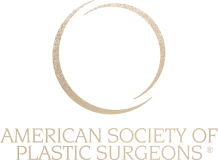















September 28th, 2022 — by Dina Eliopoulos
Maybe you’ve seen the infamous Sex and the City episode where Samantha receives a chemical peel that goes awry, or perhaps you’ve simply convinced yourself that the idea of chemical exfoliants on your face just isn’t for you. Either way, the number of chemical peel myths circulating the internet could make anyone pause before scheduling an appointment for what I consider one of the fastest and easiest ways to rejuvenate your skin!
Fortunately, most myths about chemical peels are just that…myths! With more than 20 years on the market, chemical peels have remained one of my most popular (and safest) medspa services to diminish the appearance of fine lines, acne scars and associated discoloration, and pigmentation problems like sun damage and melasma.
A chemical peel consists of a topical solution applied to stimulate the production of new, healthy epidermal cells and encourage cell turnover in the middle layer of the skin (dermis). The base of a chemical peel is a cosmetic-safe acidic component that helps remove layers of dead skin cells to trigger an improvement in the skin’s texture and appearance by speeding up this natural skin process of cell turnover.
Chemical peels are generally safe when performed by an experienced, qualified provider, but not every peel is right for all skin types. Different types of chemical peels are available to treat various skin types and concerns:
Also called a superficial chemical peel, a light peel targets only the outer layer of skin (epidermis). It is best suited for fine lines, acne-prone, and dry skin.
A medium chemical peel targets both the epidermis and the topmost layer of the dermis. It is best suited for moderate wrinkles and hyperpigmentation.
A deep chemical peel targets deeper into the dermis to remove dead skin cells located in the middle layer of the skin. It is best suited for deep acne scars and extensive sun damage.
For many of my patients, the idea of a chemical treatment on the face feels intimidating and maybe even scary, especially if you’ve only heard the myths. To ease any apprehensions, I like to discuss the common myths and then share the actual chemical peel facts:
The most common misconception about chemical peels is that they require extensive downtime to recover. However, depending on the type of peel you receive, you might be able to head right back to work. Those who undergo a light chemical peel often experience red or dry skin for the first 24 hours but can wear makeup and resume typical activities the very next day.
Those who opt for a medium chemical peel may experience a few days of healing. However, a deep chemical peel for dark spots and deep scars will likely take longer to heal due to the amount of dermis removed.
Our providers are highly experienced at evaluating, educating, and preparing patients for their chemical peels and help patients choose the appropriate peel for their individual goals and social downtime.
You might think heavy peeling is unavoidable with the word ‘peel’ in the name. Luckily, in many cases, a chemical peel does not produce excessive peeling. Since peels work at the cellular level, the topical side effects are often minimal and do not progress past mild dryness or flakiness. So, if you do not peel or flake excessively, do not fear; the chemical peel is still working.
Also, we have some peels that will not result in any peeling. An example is the PRX Peel which actually travels a bit deeper and targets the dermis rather than the superficial epidermis and does not cause any peeling whatsoever, which our patients love! This peel is great for texture concerns. We also have some superficial peels like the ZO Stimulator Peel that give you a dewy glow for that special event without any downtime.
Even the same patient might have a unique experience with each peel. Numerous factors, from the frequency of peel treatments to the condition of a patient’s skin, create different responses to the same type of peel. In addition, since chemical peels target the topmost epidermis, any external factors impacting the epidermis can influence the post-treatment response. This means that you may undergo the same peel but react differently, for example, with less peeling or slightly more peeling, depending on your skin health.
In fact, chemical peels are one of the most effective methods to rejuvenate dry skin. Peels buff away layers of dead skin to restore the skin’s natural moisture barrier and help hydrating products, like moisturizers and serums, better penetrate the skin.
Chemical peels are an excellent option for patients with acne-prone skin. Peels eliminate the dead skin cells that ultimately become trapped in pores to create troublesome pustules and blackheads. A chemical peel for acne scars is also beneficial for patients actively healing their skin.
Those patients with darker skin tones have a greater risk of experiencing post-inflammatory hyperpigmentation, but this does not mean you cannot have a peel. Instead, you need to make sure that you have a consultation to discuss the best option for your skin tone to minimize any risks.minimize any risks.
All peels are not created equal! From the depth of the skin they penetrate to the active ingredient list, chemical peels vary widely. Therefore, for your safety and to achieve the best results, you should always receive a consultation before any peel.
At Eliopoulos Plastic Surgery and Med Spa, we can explore the best non-surgical medspa treatment options for your skin concerns, which may include a chemical peel with ongoing maintenance to keep your skin looking and feeling rejuvenated! Contact us today to learn more about visiting our Chelsmford Med Spa for chemical peel treatments for glowing, vibrant skin.
Plastic surgery isn’t just about people changing their look—it's about making you feel good about being you. Whether you need breast augmentation, a breast lift, liposuction or Botox, Dr. Dina Eliopoulos is here for you. For over 20 years, patients have sought out the care and results that Dr. Eliopoulos can create in her beautiful Chelmsford, Massachusetts office. The peace of mind that comes from a board-certified, residency- and fellowship-trained plastic surgeon is hard to parallel. Schedule a consultation with Dr. Eliopoulos today to experience the difference for yourself.